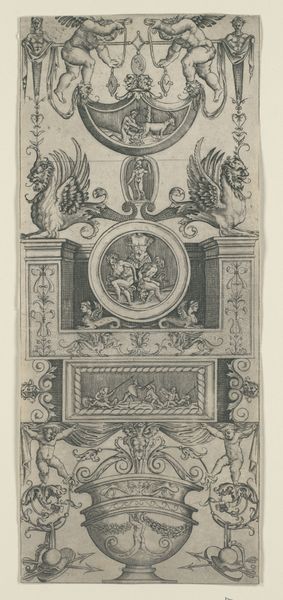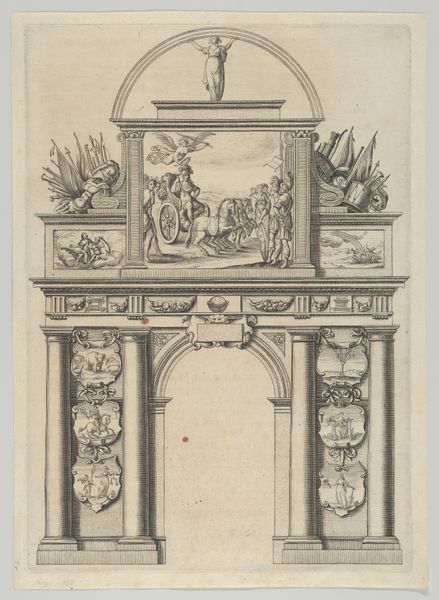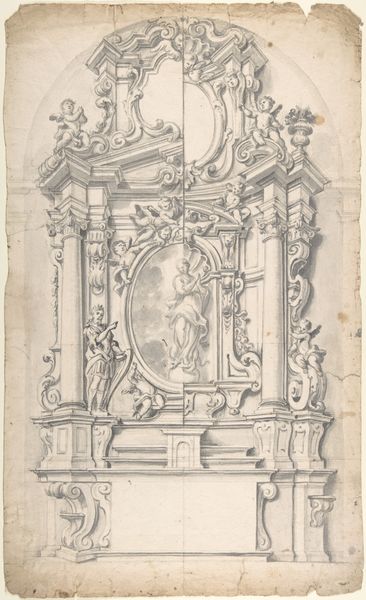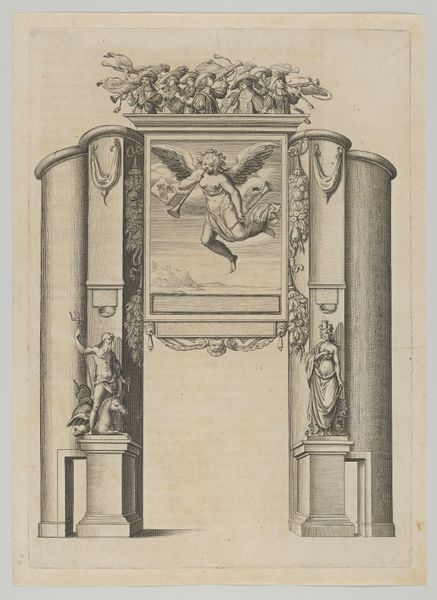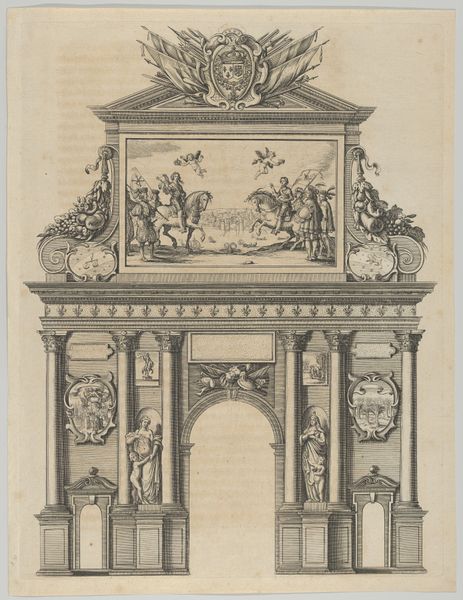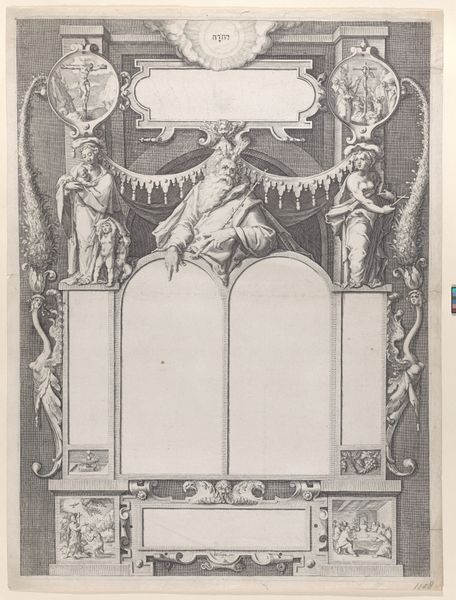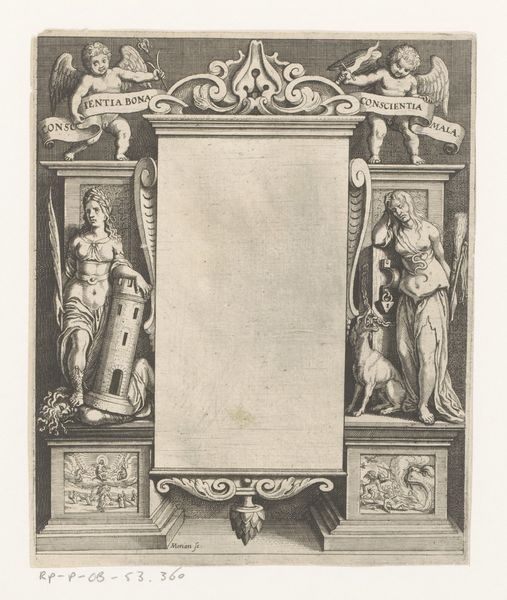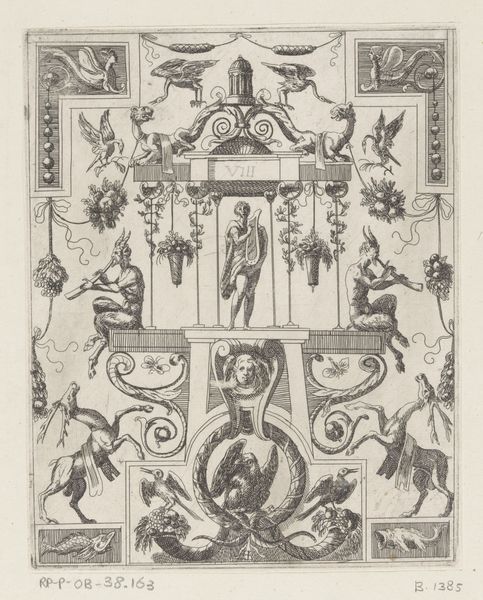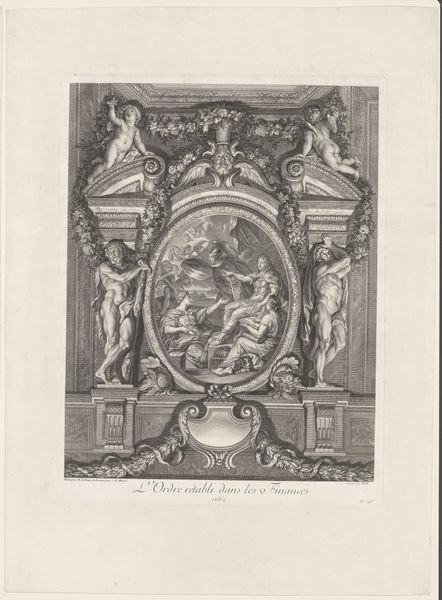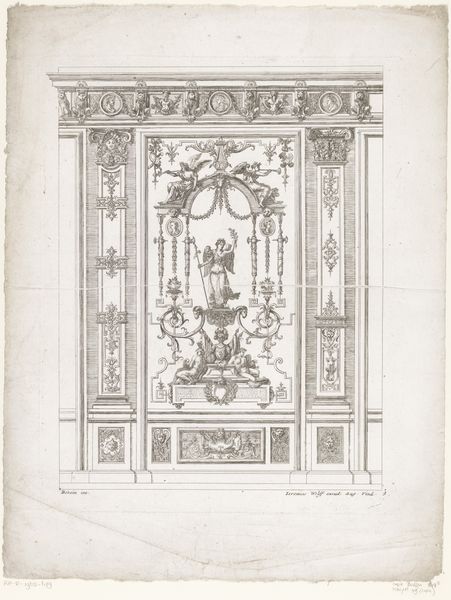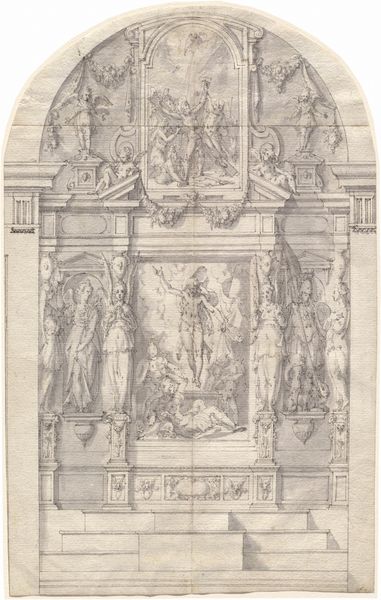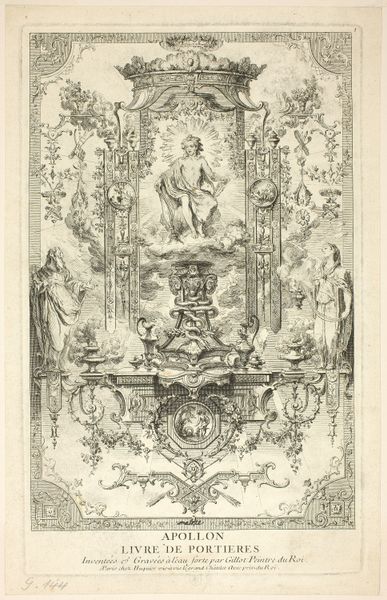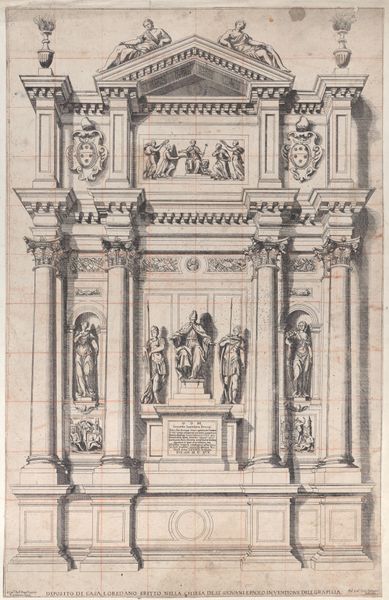
Plate 36: Triumphal arch, surmounted with a portrait bust of Ferdinand, flanked by sculptures of Apollo and Diana; ornamented with allegorical scenes below; from Guillielmus Becanus's 'Serenissimi Principis Ferdinandi, Hispaniarum Infantis...' 1636
0:00
0:00
drawing, print, metal, sculpture, engraving
#
drawing
#
allegory
#
baroque
# print
#
metal
#
sculpture
#
history-painting
#
engraving
Dimensions: Sheet (Trimmed): 19 5/16 × 15 3/16 in. (49 × 38.5 cm)
Copyright: Public Domain
This print, made by Johannes Meursius, features a triumphal arch adorned with symbols of power and divinity. Dominating the structure is the bust of Ferdinand, flanked by Apollo and Diana, deities embodying reason and nature. The inclusion of the bull is most prominent, repeated as sculpture and at the center as the scene of a man riding it. The bull, an ancient symbol of potency, fertility, and raw power, has traversed cultures from the Minoan civilization, where bull-leaping was a sacred rite, to the myth of Europa and the Bull. Here, the bull seems to reference the episode of Heracles (Hercules) and Achelous, in which the hero wins his bride, Deianira, after wrestling the river god in the shape of a bull. Observe how the image of man overpowering the bull evokes the psychological drama of control over primal instincts. Consider how this motif has transformed, resurfacing as the Minotaur in labyrinthine depths, or as a symbol of economic markets, revealing our perpetual engagement with themes of strength, desire, and conquest. Note the cyclical progression of the bull as it adapts across epochs, its potency continually reinterpreted.
Comments
No comments
Be the first to comment and join the conversation on the ultimate creative platform.
